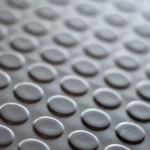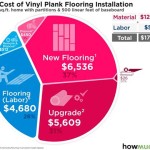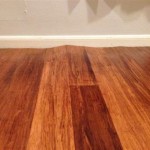Laminate vs. Engineered Wood Flooring: Understanding the Differences
Choosing the right flooring for your home can be a daunting task, with an array of options available. Two popular choices often top the list: laminate flooring and engineered wood flooring. While both offer a wood-like aesthetic and durability, they differ in their construction, characteristics, and overall cost. Understanding the differences between these two types of flooring is crucial to making an informed decision that suits your individual needs and preferences.
Construction and Composition: A Closer Look
Laminate flooring is a synthetic product that simulates the look of real wood. It consists of multiple layers pressed together: a wear layer, a decorative layer, a core layer, and a backing layer. The wear layer, made of a durable material like melamine or aluminum oxide, provides scratch and stain resistance. The decorative layer replicates the appearance of various wood species, textures, and colors. The core layer, typically made of high-density fiberboard (HDF), offers strength and stability. The backing layer provides moisture resistance and dimensional stability.
Engineered wood flooring, on the other hand, is a genuine wood product. It comprises multiple layers of real wood veneer, each glued together with the grain direction alternating between layers. The top layer, called the veneer, is a thin slice of real wood that provides the aesthetic appeal and desired wood grain. The core layers, typically composed of plywood or other wood composites, offer stability and strength. Engineered flooring is typically available in various wood species, such as oak, maple, hickory, and walnut, each offering its unique color and grain patterns.
Performance and Durability: Assessing the Differences
Laminate flooring is known for its durability and resistance to scratches, dents, and moisture. The wear layer provides excellent protection against daily wear and tear, making it suitable for high-traffic areas. Laminate is also generally more resistant to fading and discoloration than engineered wood flooring. However, its synthetic nature means it lacks the natural warmth and character of real wood.
Engineered wood flooring, while slightly less resistant to scratches and dents, offers a more natural feel and appearance. The real wood veneer provides a genuine wood experience, with variations in grain and color that laminate cannot replicate. Engineered flooring is also more resistant to moisture than solid hardwood flooring, making it suitable for areas with varying humidity levels. However, its susceptibility to scratches and dents requires regular maintenance and care.
Installation and Maintenance: Ease of Use and Longevity
Laminate flooring is known for its easy installation. Its click-and-lock system allows for quick and straightforward installation, often achievable with basic DIY skills. Unlike solid hardwood, which requires professional installation, laminate can be installed over a variety of subfloors, making it a versatile option for various settings.
Engineered wood flooring installation can vary depending on the specific type and thickness. While some varieties offer click-and-lock systems similar to laminate, others require nailing or gluing to the subfloor, often necessitating professional installation. Maintaining engineered wood flooring involves regular sweeping and mopping, along with occasional refinishing depending on wear and tear.
Cost and Value: Determining the Right Investment
Generally, laminate flooring is more affordable than engineered wood flooring. Its lower cost is attributed to its synthetic composition and ease of production. Laminate is an excellent option for budget-conscious homeowners looking for a durable and stylish flooring solution. However, it may not offer the long-term value and resale appeal of real wood.
Engineered wood flooring, while more expensive than laminate, often carries a higher resale value. Its real wood component and natural beauty can enhance a home's value and appeal to potential buyers. Additionally, engineered wood flooring can be refinished multiple times, extending its lifespan and allowing for customization over time.

Engineered Flooring Vs Laminate Everything You Need To Know Forbes Home

Engineered Wood Flooring Vs Laminate Albany Woodworks

Engineered Hardwood Vs Laminate

Hardwood Vs Laminate Engineered Floors What S The Difference Clean My Space

Laminate Engineered Wood Real Flooring What S The Difference

Solid Vs Engineered Laminate What S The Difference American Heritage Hardwood Flooring

Engineered Wood Vs Laminate Flooring What S The Difference Greyspace

Solid Vs Engineered Laminate Wood Flooring Make The Right Choice

Choosing Between Laminate And Engineered Wood Flooring Jg

Hardwood Vs Engineered Wood Flooring Which Is Best For You Forbes Home
Related Posts








